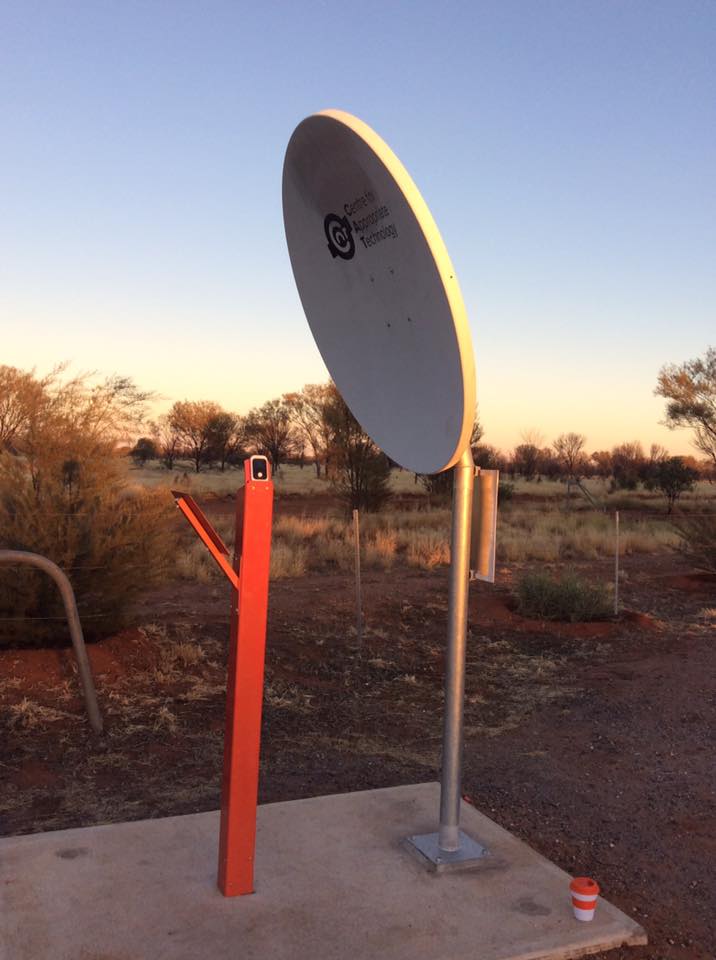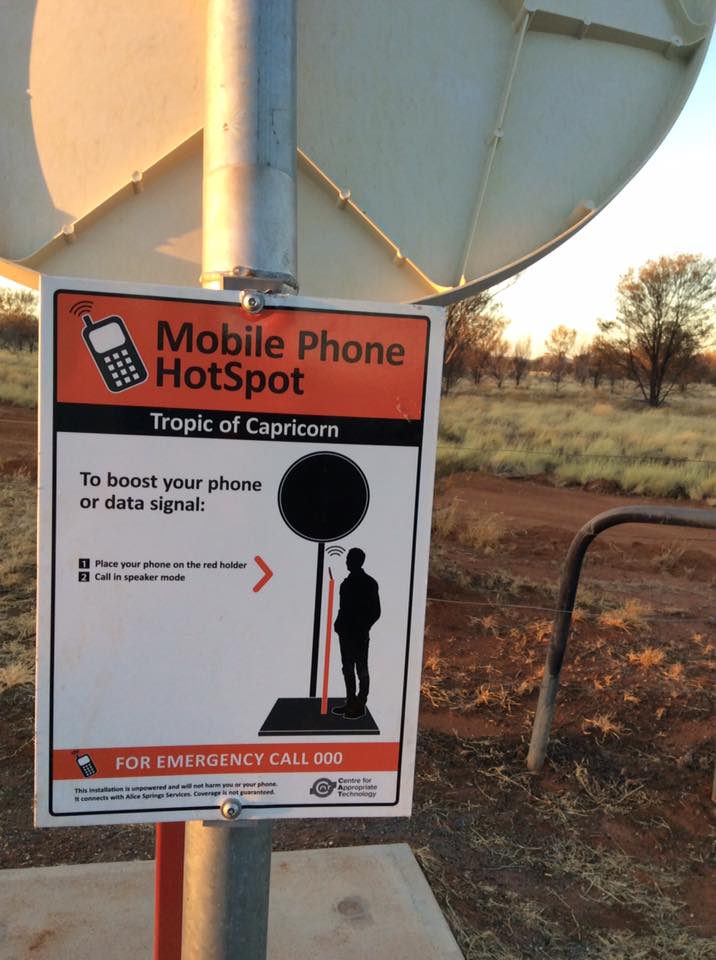Here’s a simple installation that uses an unpowered, passive parabolic dish to provide mobile phone coverage in remote Australian locations:

 The CAT are the Centre for Appropriate Technology, a non-profit who’s vision is “Sustainable and enterprising communities of Aboriginal and Torres Strait Islander People underpinned by appropriate ‘fit for purpose’ technology.”.
The CAT are the Centre for Appropriate Technology, a non-profit who’s vision is “Sustainable and enterprising communities of Aboriginal and Torres Strait Islander People underpinned by appropriate ‘fit for purpose’ technology.”.
The PDF Flyer from CAT describes the hotspot as follows:
The Centre for Appropriate Technology (“CAT”) mobile phone hotspot uses unpowered passive parabolic ‘dish’ antenna technology to focus and amplify the received and transmitted signal strength at the user end, thus extending coverage well beyond the existing footprint to locations where hand held mobile use would otherwise not be possible. A very marginal 1 bar signal becomes 2 or 3 bars and enables calls to be made reliably.
The parabolic antenna is mounted some metres above the ground, and is aligned in azimuth (direction) and elevation to point at the nearest or most suitable tower. In the standard configuration, the antenna height is arranged such that the phone can be either hand held by a user standing with the phone at the dish focus or mounted on the cradle provided, for hands-free loudspeaker mode operation. The phone/device antenna is thereby loosely coupled with the dish antenna, and the overall configuration achieves an effective increase in both-way gain.
This solution works regardless of the user mobile device technology, and can be used in conjunction with any mobile network provider’s network. In situations where a distant town provides multiple (Telstra, Optus, Vodafone) services, a single mobile phone hotspot can be used to connect with any of these services.
Whilst other product solutions are available for locations where 240 volt power is available and the associated equipment can be securely housed in an indoor environment, or where solar panel / inverter equipment can be secured and maintained cost effectively and regularly, the robust CAT mobile phone hotspot is ideally suited to the many outdoor situations such as roadside stops, small remote Indigenous settlements and remote tourism locations where the provision of power and the cost of maintenance would make the overall cost of ownership for powered solutions prohibitive.
Very innovative!








